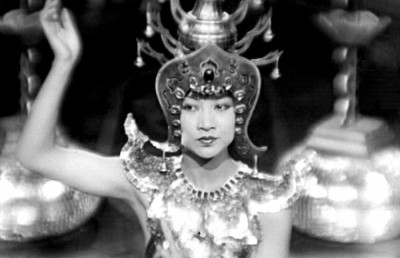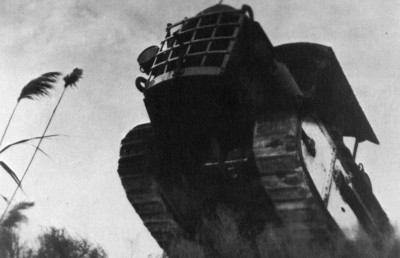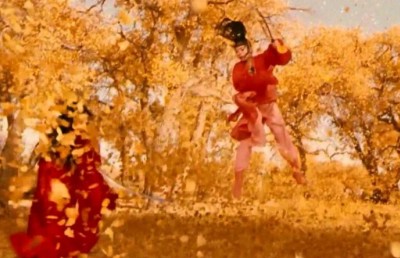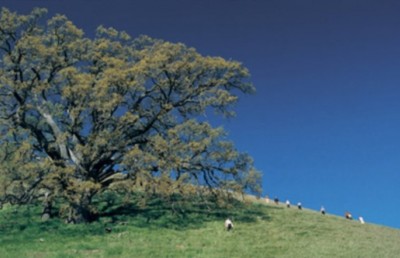Pierre Perrault’s Île-aux-Coudres Trilogy
From Whales to Ships
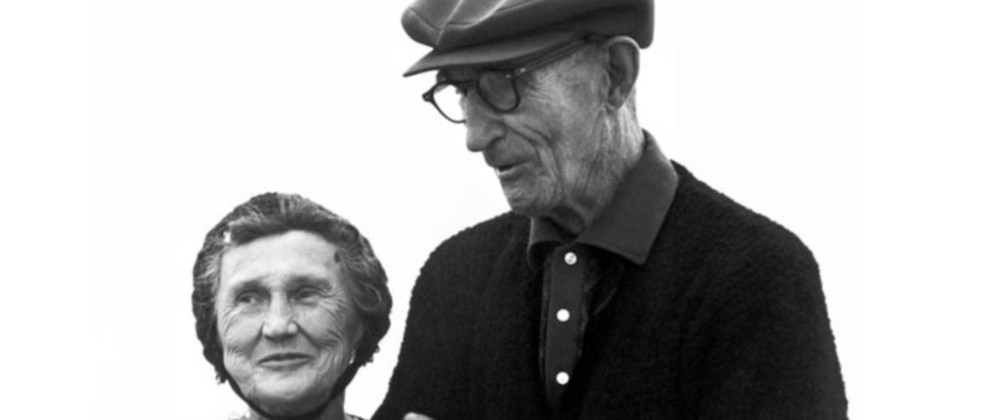
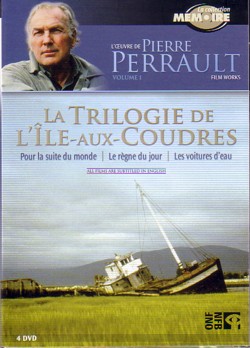
One of Québec’s national treasures (who passed away in 1999) is given the red carpet treatment by the NFB, Pierre Perrault, one of the seminal figures in redirecting the cinema vérite (or direct cinema) movement in the late 1960s toward a personal encounter with the cultural roots of Québec. This DVD box set marks the digital re-issue of the first of five themed boxed sets on the complete works of Pierre Perrault. Thankfully, the NFB have followed suit with the practise started with their recent Michel Brault box set in the same “La collection memoire” series of including English subtitles and English articles in the accompanying catalogue booklet. The latter is especially welcome for non-French readers because the included booklet contains some helpful mini essays on Perrault. This first DVD set features the Île-aux-Coudres (meaning island of hazelnut trees) trilogy dealing with the people of a small fishing/farming community in the Charlevoix region of Québec living on an island in the St. Lawrence River about 50 miles upstream from Québec City. One of the historical claims of this island is that the great French explorer Jacques Cartier landed there on September 6 and 7, 1535 during his second of three voyages. According to a travel guide, “Île-aux-Coudres was settled in 1728. Jacques Cartier gave it its name in 1535, after finding numerous hazel trees in this region. The first holy mass ever celebrated in Canada took place on this island.” [1] As Louis Marcorelles writes in an essay reproduced in the DVD booklet, “At the time he made this film Pour la suite du monde, Pierre Perrault had been living in Baie-Saint-Paul, a town on the north bank of the St. Lawrence facing the island, for over ten years. He married a local girl, and had known old Alexis Tremblay, the tutelary figure of the first two films, for a long time.” [2] What appealed to Perrault is the fact that the language and culture on the island had remained pretty much unchanged for three centuries. [3]
In the first film of the trilogy, Pour la suite du monde, Perrault convinces the island fishermen, headed by Alexis Tremblay and his son Léopold, Louis-Harvey, and Captains Abel and Joachim Harvey, to recreate a type of fishing which had not been practised on the island in 40 years: the hunt for the Beluga whale (a large all-white porpoise). With this strategy Perrault entered the territory of Robert Flaherty and Nanook of the North (1922), salvage ethnography: the act of bringing back an earlier abandoned or lost cultural tradition for the purpose of historical memory or to reacquaint the present culture with its heritage. In the second film, Le Régne de jour, Perrault invites Alexis Tremblay, his wife Marie, their son Léopold and their daughter-in-law to visit their roots: a region in Western France, Perche, Normandy, from whence the people of their region in Québec emigrated. The third film in the trilogy, Les Voitures d’Eau (‘River Boats’), deals with the tensions between the old/new, French/English, encapsulated in the large wooden schooners built on Île-aux-Coudres to transport logs which are giving way to the modern steel ships operated by the English companies from Canada and abroad. The first part of the film closely follows the building of perhaps the last of these wooden schooners, and the second half finds a handful of Île-aux-Coudres ships marooned at Trois-Rivières for 39 days during a longshoreman’s strike. The men finally return to the tiny island. As the newly built schooner sets off at sea, another older one built 45 years ago, the Sainte-Berthe, is burned at sea.
The cinema Perrault made alongside his many Québécois peers differed in its attention to rural communities –while Brault, Jutra, Groulx, et al were making documentaries on urban Québec and Montreal– and the importance of the spoken word as a means of transferring knowledge from one generation to another (what has become known as “cinema of the spoken word”). In such ‘oral cultures’ the particulars and nuances of language become highly charged. The way Perrault has the islanders talk about themselves and their culture is inexorably tied to the unique ‘French’ spoken by the islanders. While Perrault’s colleagues were looking forward, in the spirit of the Quiet Revolution, Perrault, the historian, was looking into Québec’s past. Some of the contemporary critics (and filmmakers) who chastized Perrault as a ‘reactionary’ for dealing with such ‘primitive’ aspects of Québec missed the whole point of these films. Perrault –a staunch advocate of the Separatist movement in Québec- was no simple reactionary. He simply felt that before knowing where you are going, you need to know where you came from. More astute critics noted that Perrault’s films in fact re-enforced the Separatist cause because of their anthropological attention to the language, the vernacular, of these grassroots people (of course his films were made at the National Film Board of Canada). To see the films from today’s perspective, the contrast between the island lifestyle, influenced in equal parts by the culture of their ancestral roots of Western France, and the lifestyle in the urban centres like Montreal and Québec City, underscores how far Québec has come from the Pre-Quiet Revolution ‘dark days’ (in terms of political and economic control). Which is not to say that this was Perrault’s point –to glorify the new Québéc at the expense of the old– far from it. As Louis Marcorelles says in his book Living Cinema, what interested Perrault was simply to “go gradually back into history and to try to find the hidden origins of what had survived of France in Canada.” [4]
The first film in the trilogy, Pour La Suite du Monde, still remains, for many, Perrault’s masterpiece. For starters, it is the film which introduces all the engaging characters who will feature in the first two films. At the front of the line is the elder statesman (in his late 70s), the cantankerous Alexis Tremblay, who is the most political and outspoken of the group, but hierarchical and patriarchal in the extreme. As the elder Alexis is the one with the most first hand experience hunting for the Beluga whale, although his age and stubbornness keep him from giving his full consent to the idea. Always at his side is his bedrock and wife of over 50 years, Marie Tremblay, diminutive in stature but tall in heart and soul. Léopold Tremblay is their oldest son (40), who remembers talk of the great hunt and wants to learn it so can teach his children to forward the sense of cultural continuity. Léopold has great respect for his father, but is not afraid to engage in generational conflict (which comes out strikingly in the second film). Neighbor and friend Louis Harvey (Le ‘Grand-Louis’) is the most religious of the group, but more open to the winds of change. And lastly, Abel Harvey, a sea captain who agrees to head the newly formed Beluga hunt team.
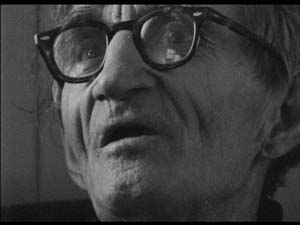
Unlike in Nanook of the North, where the viewer is unaware of the film’s status as salvage ethnography, the viewer is well aware of what Perrault is up to. So why does Perrault recreate this dead form of fishing? Certainly it is not for the whale, which is not killed (as it would have been in the day), but sold to an aquarium in New York. Perrault uses the hunt as a pretext to study people living by putting into action an event large enough to involve the whole community, to see how such a community can remain viable, alive. In doing this he is able to capture life on camera through speech, customs, habits –action in action– a ‘lived cinema.’ Perrault captures the men arguing about who started this form of whale hunting, some claiming it was the Natives (the ‘savages’ as one calls them), others believing that the immigrants from Southern France had already done the hunting before coming to the island. Alexis uses the writings of Jacques Cartier –his Bible– to prove that the Beluga whale fishing could not have originated in France. The idea of reviving this fishing tradition spreads from the top (the elders, the patriarchs who have done the hunt), then to the rest of the community as they try to raise shareholders who would then profit from the sale of the whale to an aquarium. Perrault paints an ethnographic sense of community by demonstrating the nature of the oral tradition, which, to use a term from the great Canadian Communication historian Harold A. Innis, is part of a society with a “bias of time”: meaning that the medium for the transportation of information is ‘heavy’ and hence takes time (for reflection, debate, discussion, etc.) before it is disseminated. For example, it takes the community 15 days before the idea of recreating the whale hunt is shared to the whole community at the church meeting. Whereas conventional direct cinema waits for a crisis moment, here the film is more than the capture of a whale, but the way the people talk in organising the hunt and the inter-generational connections that come out of it.
Perrault is also not averse to employing more symbolic forms of expression, like in the quite wonderful sequence at around the hour mark where he films children playing with a miniature wooden boat. The camera pans along the pond at water level to ducks and ducklings. The duck/duckling pairing is echoed by the little toy boat and larger boat carrying the boys captured in the same frame. Meanwhile on the soundtrack we hear Louis Harvey talking about the importance of continuity and legacy. These are images that suggest some of the many qualities of the island community: youth/old age, play/work, parent/child, and nature/culture.
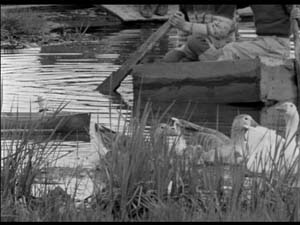
After the successful capture of the whale, Perrault’s camera follows the truck carrying the whale to its new aquarium home in New York City. Some of the men involved in the catch accompany the whale to its new home. Perrault intercuts between New York and Alexis back home relating the experience to his friend Captain Abel Harvey. The film concludes with an ironic form of success: the whale hunt succeeded, but the prize is sold to the New World, where it will live on in an unnatural environment as a tourist attraction. But, as Alexis and friends watch their whale swimming amongst other whales in the tank (becoming momentary tourists themselves), Alexis says, “All animals talk, all fish talk….Fish talk to each other. Alaska’s near Russia. Maybe they speak Russian. Ours speaks French or English, coming from a bilingual country.”
The second film in the trilogy, Le règne du jour, is framed throughout by intertitles which announce the subject of the next segment. On their way to France by New York they stop off to see an old ‘cousin’: the Beluga whale they captured in the first film! On the ship to France Alexis gets into a discussion with a French woman. Alexis tells her that “And if today there are people in Canada it is thanks to the French…That’s why I am glad to visit, above all, the cradle of my ancestors.” The woman then asks him if they don’t feel betrayed by France, abandoned by them. This is, of course, classic discourse regarding the position of Québec as 8 or so million people surrounded by a sea of over 300 million English-speaking people. We don’t hear Alexis’ response, instead the scene cuts to a brief shot of a granddaughter asking Alexis where France is, to which he replies, “Where is it? I know it is in Europe. I know it is on the Channel, but….” The scene cuts back to the ship as it docks into France, with Léopold saying, “There’s your France, Pa. There’s your France. That’s her!”
While lauded as the direct cinema classic that it is, what is most striking about Le Règne du jour is its montage. The majority of the film is structured around classic parallel cutting between the Tremblay’s in France interacting with the French people and the Tremblay’s back at home interacting with their friends and family. The film’s use of this editing expresses the montage theory put forth by the classic Russian filmmaker/theorist Pudovkin in his book Film Technique and Film Acting. Pudovkin outlines five types of “relational editing” [5]:
1-Contrast
2-Parallelism
3-Symbolic
4-Simultaneity
5-Leit-motif (or reiteration of a theme)
The first three are used extensively by Perrault, especially Parallelism, in the linking together of scenes across different time and space (cutting between Québec and France) to underscore a relation between the action or dialogue to form a variety of meanings and effects (comic, ironic, political, etc.).
Almost as if Perrault himself did not want the Tremblay’s to forget about their immediate roots, he continually parallel cuts between them in France and Alexis (and Léopold and Marie) back at Îles-aux-Coudres relating his experiences abroad. At times the parallel cutting has an obvious function of comparing/contrasting, like when the film cuts back and forth between Lèopold helping to kill and prepare a pig on a Normandy farm and doing it at home, to demonstrate the differences between the two farming methods. But it is also used for outright comedy, as in the following exchange between the Normandy farmer, Alexis, and Léopold. The Normandy farmer and Alexis share a moment of common generational accord at the expense of the young (with Léopold momentary off-screen):
Normandy Farmer: It’s sad to have to say it but these are strange times. It can’t go on like this.
Alexis: Very well put. Things have to change.
Farmer: It’s wonderful to hear…
Alexis: Well you can’t, like in Canada.
Farmer: But the young people… they’re much better educated than us. But they can’t do fuck all…They can’t do anything! They can hold a pen and pencil better than a shovel… (the camera remains on Alexis, whose smile confers his approval).
Léopold now enters the fray and begins to stand up for the younger generation. “But if you can use a pencil you don’t need a shovel, because of progress.”
The argument takes hold around the virtues of manual labor and common sense and education, with the pencil the signifier for education. Then Perrault creates a gem of a comic edit by cutting to Lèopold back at home, searching his jacket pocket and saying to someone just off-screen, “Dammit, I forgot my pencil.” Parallel cutting for comedy occurs again later during the grandfather clock scene, when we cut from Alexis pleading with an antique dealer to sell him a particular grandfather clock as a souvenir of his visit to France, and Alexis back home telling his family to throw the useless grandfather clock into the river.
The use of meaningful parallel cutting in Le règne du jour also works the other way, going from Québec to France. Throughout the film we get to hear much of Alexis’ old-school philosophy, his old-fashioned attitude to the modern world, technology, leisure, fashion, etc. We see him back at Île-aux-Coudres telling Louis that in France he only saw one woman wearing pants, and that ‘here’ (we must assume by this he means Canada) “the woman are practically naked.” The film then cuts back to a leisure boat port area and the first thing we see is a woman on a boat wearing very short pants and a tight shirt waving to Alexis and Léopold!
The Tremblay’s travel from Perche to La Rochelle, moving closer to their ancestors, where we are witness to a touching moment when Alexis kisses the marriage papers of Pierre Tremblay and Jeanne Cognet, which began their ancestral lineage back in 1623 (Lèopold refers to Pierre Tremblay as ‘your father’). This theme of lineage, ancestry and tradition is a constant throughout the trilogy, in both the personal sense (as above) and the social, as when Lèopold explains to the people back home that the fox hunting he witnessed in France is a ‘trace’ of the time when hunting was the sport of nobility.
Although the film is ‘backward’ looking, it can still speak to us today, and is quite prescient with regards our over-dependence on non-sustainable forms of energy. The scene in questions takes place in France, with Alexis and his son sitting in front of a port overlooking a fleet of leisure boats. The son tries to explain that the boats are for fun, and that he would have fun too if he went on one. But Alexis, the pragmatist, points out that these boats use gasoline, not wind power, and asks rhetorically, “Where’s this modern stuff going to lead? I wish you luck, but I fear, I’m afraid, that it will end in no good.” While Alexis continues to chastize the wastefulness of these luxury boats, Lèopold notes that these people in France would be just as scandalized if they came over to Québec and saw what vehicles we used, at which point Perrault cuts back to a Québec winter scene of a man driving a skidoo. The point made that waste is everywhere.

The issue of language is never too far behind in the trilogy (remember the discussion over the language the whales speak at the end of Pour la suite du monde). It comes to a head in the section with the intertitle “Reflections on Language,” where the Tremblays back home discuss the many differences between the French spoken in Québec and in France. In a scene where Alexis visits with a shipbuilder, Alexis points to a part of a model ship and refers to it as the “jib.” The French shipbuilder corrects him. “The focs. We call them focs….Jib is an English word. And a filthy language it is” (with a smile on his face). This exchange concerns what many language snobs in Québéc and France (although there are differences between the two) refer to as ‘Franglais,’ which is when English words are thrown into the French mix, an ‘impurity’ which occurs in both Québec and France (i.e., le weekend, un parking, hot dog, etc.). This extended scene –which in its discussion of ships looks ahead to the third film– displays another example of parallel cutting for humor. Standing outside a shop window in France Alexis tells his wife that, surely, one of their 72 grandchildren would want a model of a Jacques Cartier ship as a memento of their trip. The scene cuts back to Québec before the trip, and a scene where one of their grandchildren asks them if they could bring him back a toy truck from France. The underlying humor in this exchange is that Alexis is probably using the grandchildren as an excuse to buy the replica Jacques Cartier ship for himself, because he knows that Marie would never stand for such a wasteful purchase.
The film ends with its most potent political exchange, between Alexis and Grand-Louis out in the open farm air of Île-aux-Coudres (the section is titled “French Blood”). In this scene Alexis fantasizes that one day France will come back and reclaim French Canada. The scene recalls the dialogue he had with the French woman on the ship travelling to France, who asked him if he didn’t harbor any resentment against France for abandoning them (no need here for a history lesson on the Seven Years’ War which saw New France cede Québec to the British). Although their exchange is laced with much humor, Alexis and Louis lament the plight of the French Canadian, chastizing the ‘weak’ English (the “blokes”), saying that the French Canadian is not given enough credit for discovering and founding the country, and reprimanding France for neglecting her (we finally get, retroactively, indirectly, Alexis’ response to the French lady’s question on the ship). Louis then goes into a tirade about how the French blood is being diluted, “There’s some Pepsi in it now, and Coke…and Seven-up” (Alexis folds over in laughter). Coming from an older, conservative, religious man, it is a clear statement of the illusory notion of a pure blood Québécois (‘pure laine’) which, taken in the wrong context, harbors a racist undertow. However, the final image (an obviously contrived composition) is of Alexis and Marie seated with the huge grandfather clock, which is now fixed, in-between them: the old France nestled between two human Québécois relics. Alexis’ earlier over-the-top anger at the clock (at one point he takes an axe to it but is stopped by his son) seems to me a form of displacement over the ultimate disappointment of his visit to France. Although he seems on the surface to have enjoyed the voyage, the many cultural differences between Québec and France can only lead to one conclusion. To quote Peter Harcourt, “Québec can no longer be seen as an offshoot of the old country. It is a nation unto itself.” [6] And just as there is only one Québec, there is only one Alexis Tremblay. Try as you may, you could never write a character like Alexis Tremblay.
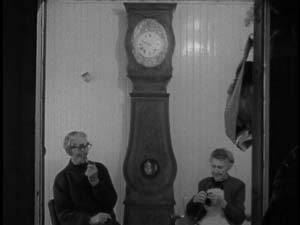
The charismatic Alexis Tremblay is seen in only a handful of scenes in the final installment of the trilogy, Les Voitures D’eau, and passed away shortly after it was made. Replacing him as the central figure is the equally irascible (but much younger) Lambert Tremblay, captain of the ship Amanda, and his two sons Yvan and Aurele. The first half of the film alternates between workers building a wooden schooner and shipmen fixing their ships that have returned from sea worse for wear. Like the Beluga whale hunt, the building of the boat brings together the sense of community. The men debate and argue the science of ship building, while people stop by to chat and exchange gossip. The ships, which are used to transport wood to the pulp mills, are an important source of the island’s economy. In the second half of the film a longshoreman’s strike in the city of Trois-Rivières maroons a handful of Île-aux-Coudres ships for 39 days, leaving the men time to sit around with nothing to do –a state they are rarely in. The men complain about the march toward automation, the inequality between union and non-union workers, the government’s bias toward big shipping companies, the competition from off-shore ships, but accept their fate with an almost philosophical resignation. In the final scene a 48 year-old ship deemed no longer sea worthy, the Ste-Berthe, is burned at sea. The community watches on. For the kids it is a fun, exciting diversion, but for men like Alexis and Laurent Tremblay (who in an earlier exchange said, “I’d mortgage my wife to buy another boat”) the sight –turned into an aesthetic spectacle by Perrault– is a painful signifier of a lost tradition (and livelihood).
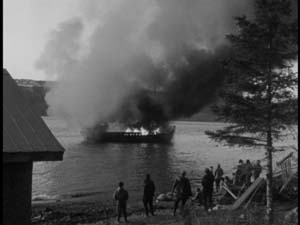
The image of the burning ship, an ironic record of the type of vessel which brought Jacques Cartier to the island over 400 years ago, is almost too hard to watch for Alexis Tremblay and ship captain Laurent Tremblay. In an interview on one of the DVD extras Perrault is asked, “What does the film Les Voitures D’eau signify?” He replies: “Québec. Because the whole spirit of the wood is being annihilated by the spirit of the iron. They’re loosing the mastery of the St. Lawrence. I can’t say more.”
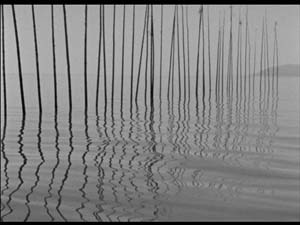
All of the films in this DVD box set are featured in their proper full-frame aspect ratio and come in excellent digital transfers, with removable English subtitles. The excellent transfer is particularly rewarding with regards Michel Brault’s (first film) and Bernard Gosselin’s (second and third film) impeccable cinematography. Brault’s work in Pour la suit du monde is perhaps more obvious in its poeticism, due in some measure to that film’s attachment to the island’s natural landscape. Brault’s filming of the St. Lawrence River is alone cause for aesthetic rejoice: the way he frames objects along the riverbed, light and reflections shimmering off the water, or the wooden stakes aligned in unison to trap the whale. In one sublime shot of the wooden stakes, the camera begins to track back over the water reflections and the quick movement gives the illusion of transforming the quivering stakes into water reeds. Gosselin’s work in the next two films, while not as pictorially beautiful, work on another form of landscape, a human one, capturing with eloquence and grace, hands, faces, bodies in movement, and gestures. The DVD also includes three other short film attractions collected on a fourth DVD. The most interesting is Le Beau plaisir (1968), a 15 minutes film which returns to Île-aux-Coudres to reprise the Beluga whale hunt of Pour la suite du monde, with the major difference here being the use of color. Perhaps after watching three films on Île-aux-Coudres in black & white it is hard to make that mental and perceptual switch to color, but somehow the color takes away from the poetic quality of Pour La Suite du Monde. Nonetheless, it is an interesting chance to see the island and its familiar people in color. And the color does bring out the beauty of the all-white Beluga whale. For this short the three principals return, with Lèopold taking an active role in the hunt and the two elders, Alexis and Grand-Louis on hand to give their emotional reactions to the hunt revival.
The two other shorts are the self-explanatory 39 minute Pierre Perrault Speaks About Île-aux-Coudres (1998), shot a few months before his death; and Pierre Perrault Seen By… (1999), a 30-minute tribute to Perrault by the people who worked with him (Serge Beauchemin, Michel Brault, Suzanne Allard, Marcel Carrière, Monique Fortier, Bernard Gosselin, and Martin Leclerc). The majority of the time is spent discussing the technical aspects and working methods of Perrault’s direct cinema from the practitioners themselves (camera work, sound, editing), at the same time painting a portrait of a man who was equal parts poet and cineaste, nationalist and naturalist, intellectual and laborer, a person whose presence and spirit lifted those around him while leaving a lasting impression on those who were fortunate enough to have known him. You can purchase the Pierre Perrault box set through the NFB website.
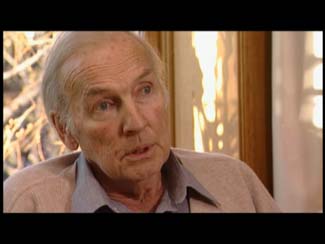
Endnotes
1 The Portal of Québec. Accessed June 14, 2007.
2 Louis Marcorelles. “Living Cinema –Pierre Perrault.” The Île-aux-Coudres Trilogy. NFB, 2007, p. 67.
3 Martin Knelman. “Not the Average Fishing Tale.” The Île-aux-Coudres Trilogy. NFB, 2007, p. 71.
4 Louis Marcorelles. Living Cinema. London: George Allen & Unwin Ltd., 1973, p. 75.
5 Vsevolod Pudovkin. Film Technique and Film Acting. Trans, Edited by Ivor Montagu. New York: Grove Press, Inc., 1929; 1949 ed., p. 75-78.
6 Peter Harcourt, “Pierre Perrault and Le cinéma vécu.” Take Two. Ed. Seth Feldman. Toronto: Irwin Publishing, 1984, p. 131.



